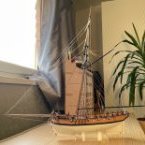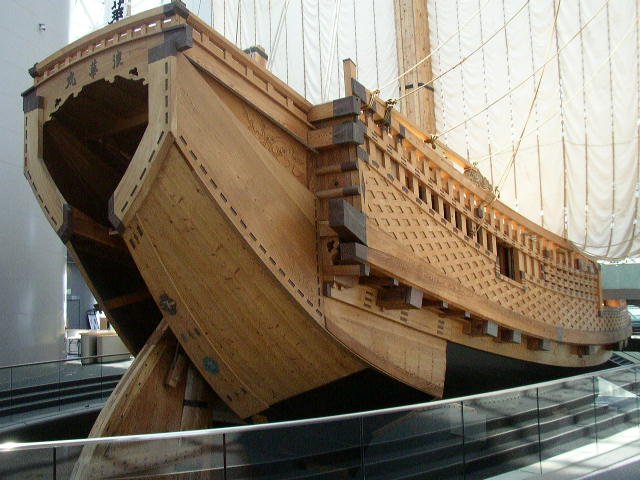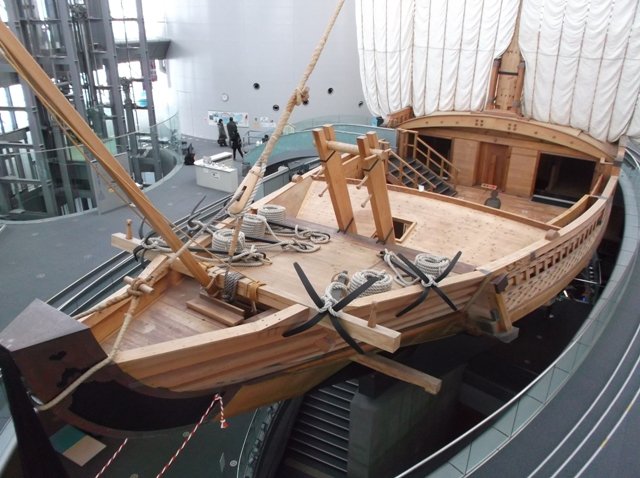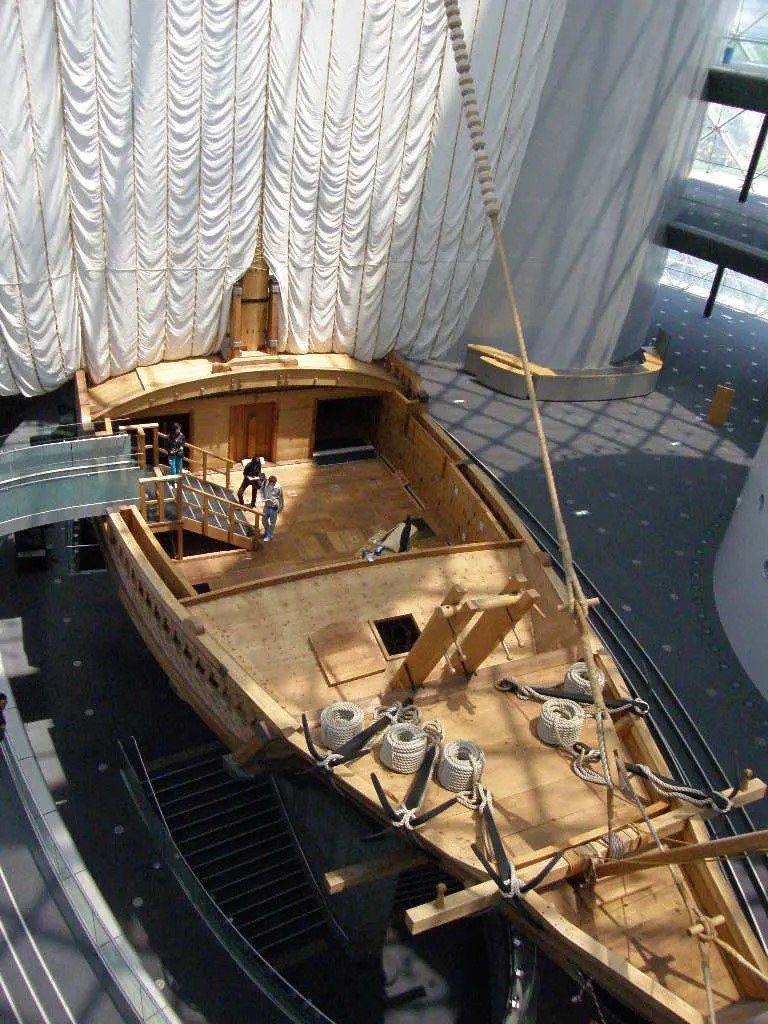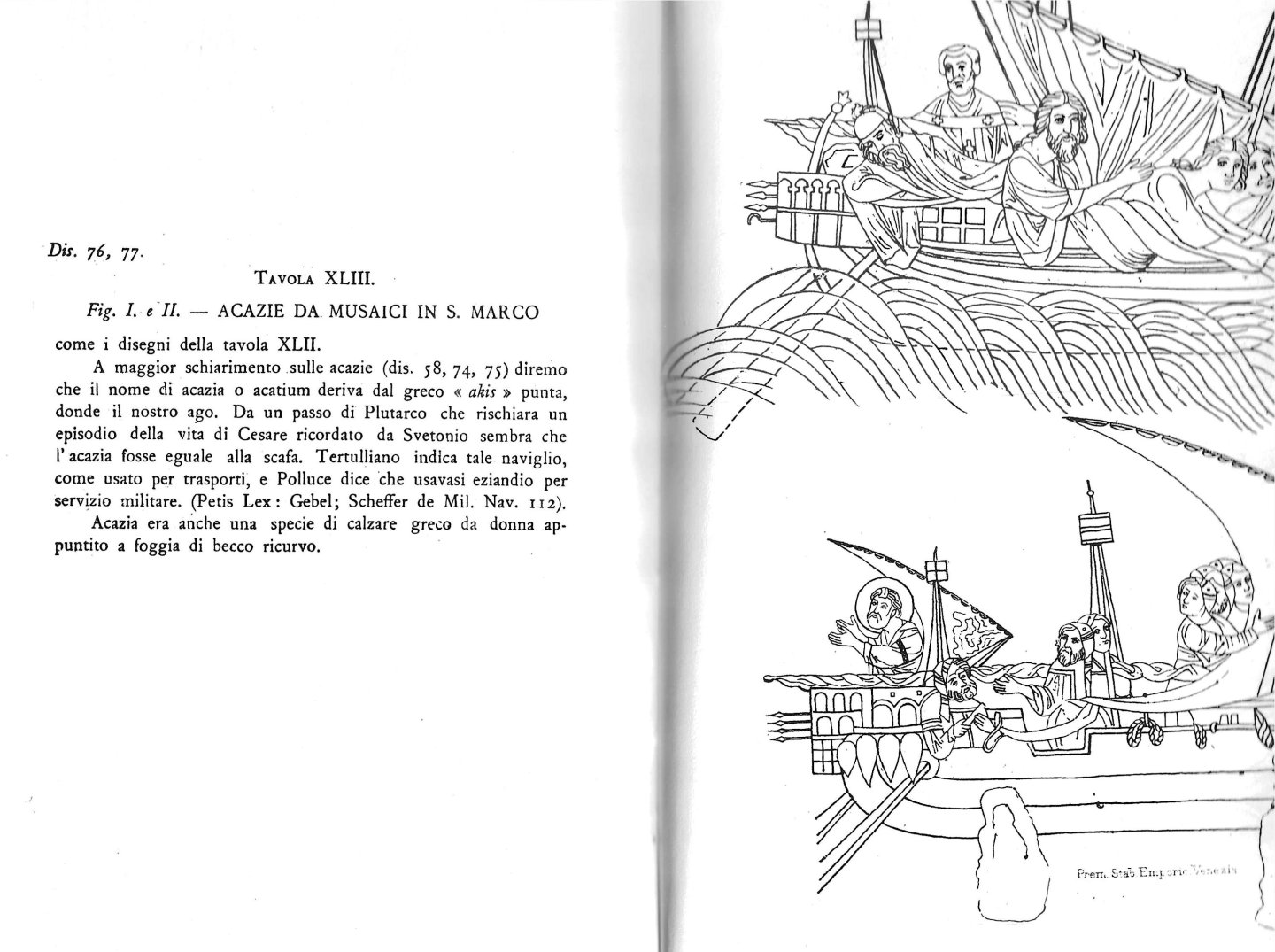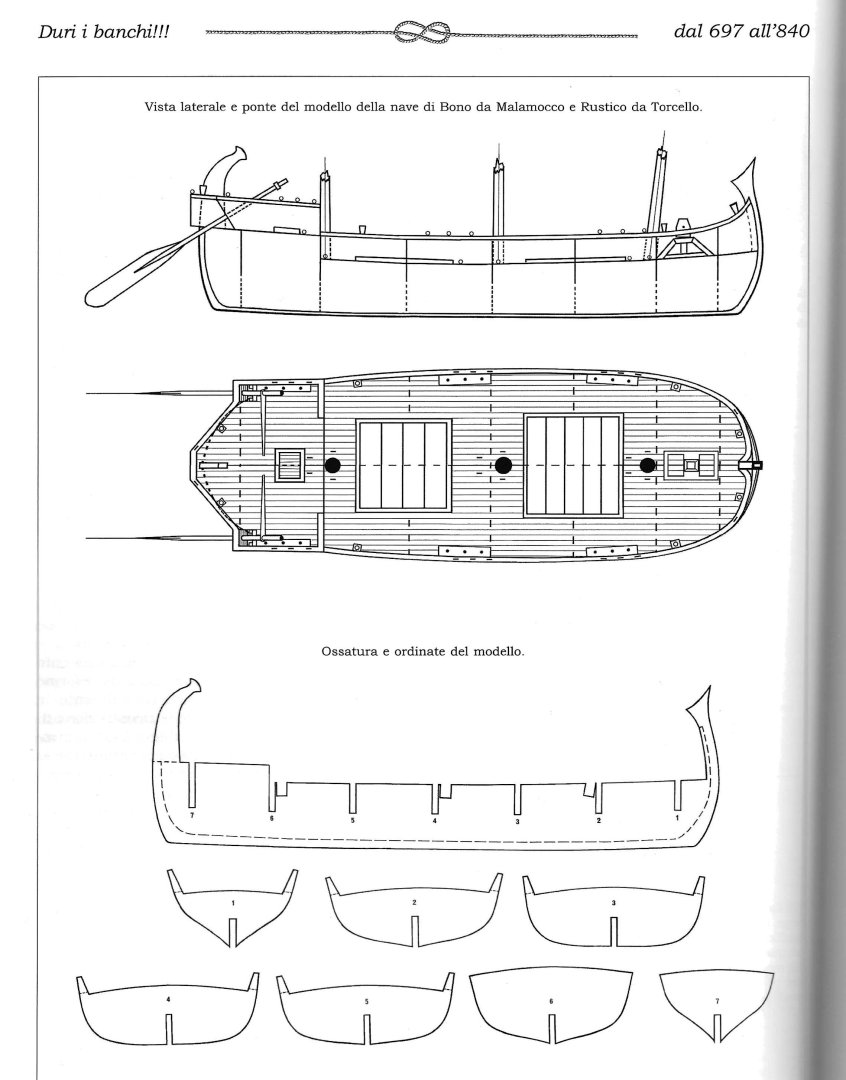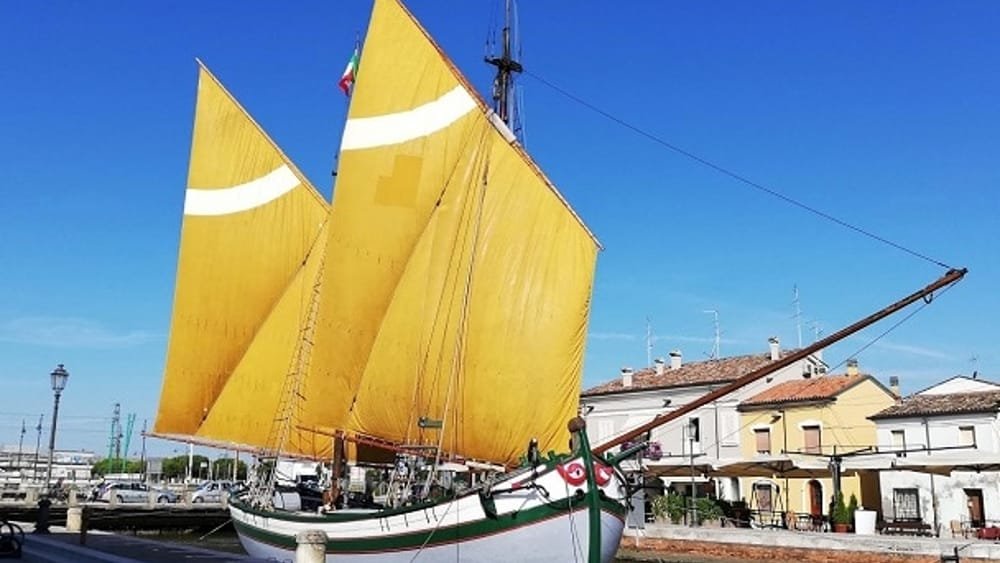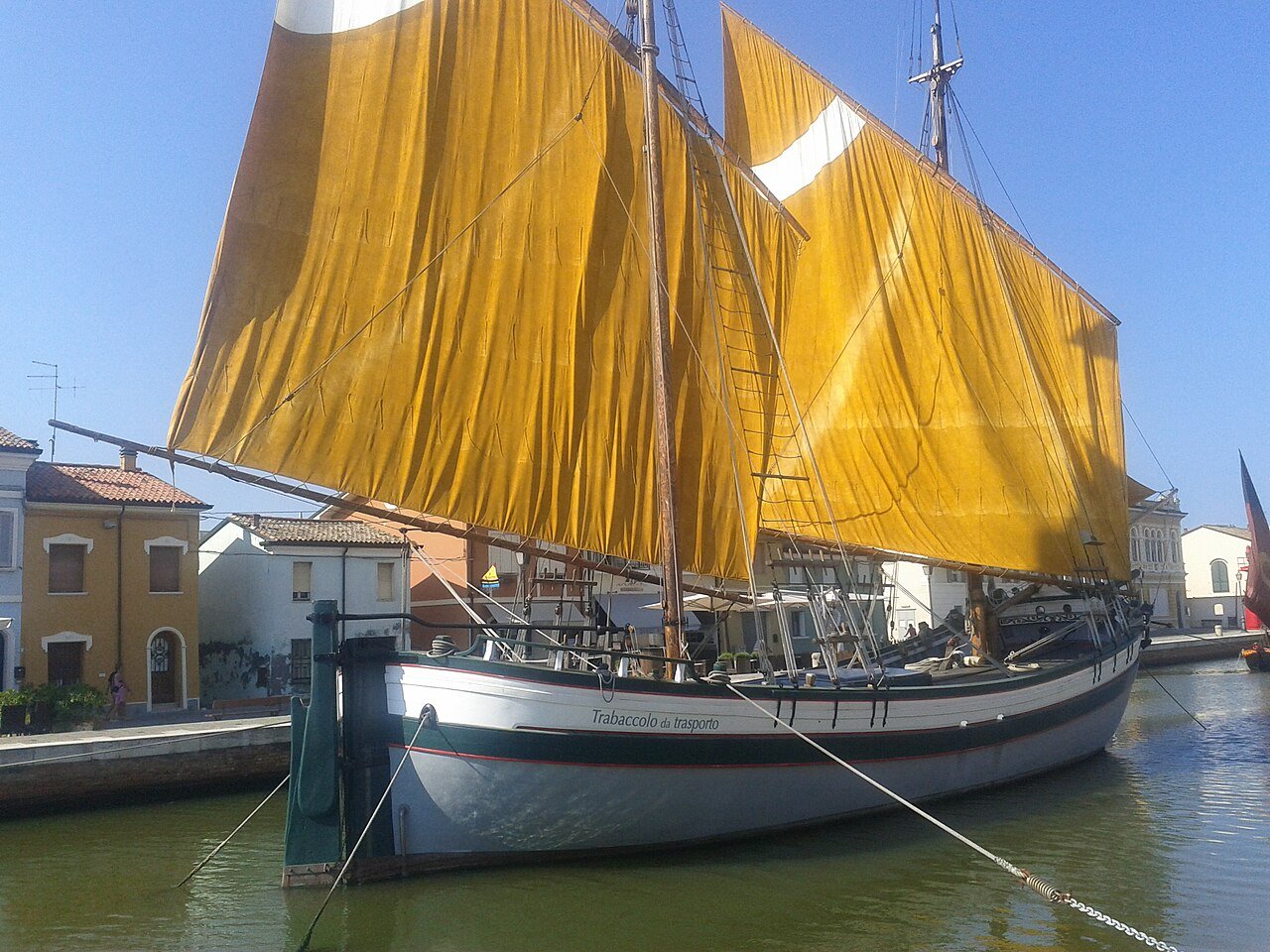-
Posts
423 -
Joined
-
Last visited
About Cristiano
- Birthday 04/18/1970
Profile Information
-
Gender
Male
-
Location
Bologna - Italy
-
Interests
Wood ship modelling, miniatures painting, history, and reading novels of various type
Recent Profile Visitors
-
Cristiano started following Ancient galley rams discovered - photos , Italian Boats of the Adriatic Sea , Polacca Veneziana by Buntzi - Amati - 1:100 (maybe) and 5 others
-

Italian Boats of the Adriatic Sea
Cristiano replied to jack.aubrey's topic in Nautical/Naval History
It seems that it is (or it was) a kit manufacturer from Czech Republic. But it was specialized in plastic kit or resin kit. See below an example of its kit. It seems that another name is PAVLA MODELS. Too few informations for purchasing a kit, in my opinion. -
 Keith Black reacted to a post in a topic:
Polacca Veneziana by Buntzi - Amati - 1:100 (maybe)
Keith Black reacted to a post in a topic:
Polacca Veneziana by Buntzi - Amati - 1:100 (maybe)
-
 buntzi reacted to a post in a topic:
Polacca Veneziana by Buntzi - Amati - 1:100 (maybe)
buntzi reacted to a post in a topic:
Polacca Veneziana by Buntzi - Amati - 1:100 (maybe)
-
Hello Bogdan, you have made a very good work, don't be too hard on yourself. Consider that finishing the hull, you have finished the most complex part of your model. The level of completion of the rigging depends only by you, but keep in mind that your model is of a small size and cannot fit everything that "theoretically" is needed on these type of sails. Probably Amati has made some simplifications too.
-
 GrandpaPhil reacted to a post in a topic:
Venetian Polacre by Cristiano - FINISHED - XVIII century
GrandpaPhil reacted to a post in a topic:
Venetian Polacre by Cristiano - FINISHED - XVIII century
-
 GrandpaPhil reacted to a post in a topic:
Venetian Polacre by Cristiano - FINISHED - XVIII century
GrandpaPhil reacted to a post in a topic:
Venetian Polacre by Cristiano - FINISHED - XVIII century
-
 Cristiano reacted to a post in a topic:
Venetian Polacre by Cristiano - FINISHED - XVIII century
Cristiano reacted to a post in a topic:
Venetian Polacre by Cristiano - FINISHED - XVIII century
-
 buntzi reacted to a post in a topic:
Venetian Polacre by Cristiano - FINISHED - XVIII century
buntzi reacted to a post in a topic:
Venetian Polacre by Cristiano - FINISHED - XVIII century
-
 Cristiano reacted to a post in a topic:
Important notice about a fraud using AL
Cristiano reacted to a post in a topic:
Important notice about a fraud using AL
-
 Stephen Allen reacted to a post in a topic:
Why did Endurance sink? new hypotesis about the weaknesses of the ship
Stephen Allen reacted to a post in a topic:
Why did Endurance sink? new hypotesis about the weaknesses of the ship
-
 thibaultron reacted to a post in a topic:
Why did Endurance sink? new hypotesis about the weaknesses of the ship
thibaultron reacted to a post in a topic:
Why did Endurance sink? new hypotesis about the weaknesses of the ship
-
 Waldemar reacted to a post in a topic:
Ship design and gunnery in England around 1600 according to „Dell’Arcano del Mare” by Robert Dudley
Waldemar reacted to a post in a topic:
Ship design and gunnery in England around 1600 according to „Dell’Arcano del Mare” by Robert Dudley
-
 druxey reacted to a post in a topic:
Ship design and gunnery in England around 1600 according to „Dell’Arcano del Mare” by Robert Dudley
druxey reacted to a post in a topic:
Ship design and gunnery in England around 1600 according to „Dell’Arcano del Mare” by Robert Dudley
-
Dear Waldemar, you are making a true masterpiece of work, considering that the ancient Italian language can be sometimes a challenge even for an Italian. Regarding the never translated Dudley's book, eventually the matter can have some connection to his troubled past in England. I looked at the history of his troubles in his native nation and were very complex: basically he almost flee to Italy: https://en.wikipedia.org/wiki/Robert_Dudley_(explorer) In anycase the book was initially self-published, so it is possible that without the support of the scientific community in his homeland, it's unlikely that such a book could have been translated into English. He was practically an outcast in his homeland. However, that book is considered the first nautical atlas ever published in the world, so at least he got credit for that.
-
 Canute reacted to a post in a topic:
SS United States
Canute reacted to a post in a topic:
SS United States
-
Sad update for this ship future.... https://apnews.com/article/historic-ship-artificial-reef-philadelphia-florida-gulf-818c44d7f3078c4ffa3b8aa39f3329ed Below a very detailed article about its troubled life with its various owners. It is italian written, but Google translate make miracles... https://rollingsteel.it/lo-united-states-il-transatlantico-piu-veloce-di-sempre-sta-per-essere-affondato/
-
 Cristiano reacted to a post in a topic:
Help identifying anything about this ship?
Cristiano reacted to a post in a topic:
Help identifying anything about this ship?
-

Help identifying anything about this ship?
Cristiano replied to tula's topic in Nautical/Naval History
Are you sure that the ship belong to Spain or new world? to me it seems an Austro-hungaric flag: the flag colour seems more Red/white than red/yellow... like that type of ship portrait (just an example, it is not the same ship) In anycase, it is rather impossible to identify the ship: too small in terms of size and too common in that historical period. In addition, to me the painting appears a ship portrait, so usually it was the only visual information existent about a ship. -

Ancient galley rams discovered - photos
Cristiano replied to Louie da fly's topic in Nautical/Naval History
Some of the recovered rostrums were considerably larger than the others and are assumed to have belonged to quinquiremes. In the latter part of the First Punic War the Romans financed the accelerated construction of 200 quinquiremes, to rebuild their decimated fleet. The Romans employed 300 to 350 ships in the battle, so it is assumed that a significant presence of quinquiremes derived from the 200 recently built. Just to complete what Wefalck wrote: The corvus bridge was used only in the Punic Wars, because it was excessively heavy and unbalanced the ships at sea, being about 10 meters long and with a hypothesized weight of around 1000 kg. After the Punic Wars, the Corvus bridge was no longer mentioned in any document. It was later replaced by the Harpagon, to be launched with ballistae. -

Ancient galley rams discovered - photos
Cristiano replied to Louie da fly's topic in Nautical/Naval History
Another galley's ram found in the site of the Egadi's naval battle....now we are at 27 rams found! Not anymore rare artifacts... https://tg24.sky.it/cronaca/2024/08/23/rostro-romano-battaglia-egadi Article is italian written, but can be easily translated by google... -
 Cristiano reacted to a post in a topic:
Amerigo Vespucci by DanielD - OcCre - 1:100
Cristiano reacted to a post in a topic:
Amerigo Vespucci by DanielD - OcCre - 1:100
-

Kit review Belle Poule - Occre - 1/90 - review by kevin
Cristiano replied to Kevin's topic in REVIEWS: Model kits
Thanks to everybody for the suggestion of the copper tape (which already had used in the past), but the sense of my comment was of a different meaning: since this type of ship needed almost surely a layer of copper sheets, why don't put it already inside the box? An answer is not strctly needed... -

Kit review Belle Poule - Occre - 1/90 - review by kevin
Cristiano replied to Kevin's topic in REVIEWS: Model kits
This kit appears a very good one, considering the presence of a very detailed instruction manual too. The historical period chosen is interesting, post-Napoleonic. My only doubt is related to the absence of the copper sheets for the hull. Probably is considered a very expensive accessory to be included in the kit. These types of ships already had copper hull cladding so the modeller is forced to purchase the sheets apart if he want to complete the model. -
 Cristiano reacted to a post in a topic:
Dorian Ship c. 1300 BC by shadowcaster - Scale 1:100
Cristiano reacted to a post in a topic:
Dorian Ship c. 1300 BC by shadowcaster - Scale 1:100
-
it seems that the above cited ship's replica is rather famous in Japan. Probably there aren't many studies about those type of ships. So it is the most proposed example, commercially. I just found that exist a wooden kit of it! below an example of a link to a online shop where the kit is sold (the eternal Amazon): https://www.amazon.ca/Woody-Joe-Higaki-Kaisen-Wooden/dp/B00B8HVAL2 Below a review of the kit : https://wasenmodeler.com/2013/11/25/initial-thoughts-on-woody-joes-higaki-kaisen/ Below the construction of the model INSIDE THIS FORUM:
-
Maybe you can try to find more informations and books related to this floating replica that was made more than 20 years ago in Japan: https://en.wikipedia.org/wiki/Naniwa_Maru I remember I read an article about the technics of construction of this vessel, since they used the same ancient technics to build it.
-
Hello Steven! You are building a great model! Since there is some discussion regarding the sails type, I want to share my informations, that I have found in my books. Type of ship In all the sources that I have (Italian sources), the "San Marco ships" are all defined ACAZIE (singular ACAZIA). In some nautical dictionary this type of ship is called also ACAZIO. One of the possible origin of the name is greek: "A type of Greek pointed shoe for women in the shape of a curved beak." The Acazia was a small commercial ship (which later evolved in a medium size) of bizantine origin. It was widely used by the Venetians in their first centuries of their Republic. The type of sails used were different. All the sources write about the fact that the sails used in the origin were latin type and then evolved in squared type. The ACAZIA in the Adriatic sea later evolved in the TRABACCOLO. Some Trabaccoli are still existent as historical ships in the Adriatic sea. Type of sail The images on the San Marco Mosaic present apparently a square sail type. But the sources that I have checked (all Italian sources) make a reconstruction with a trapezoidal type sails (like the Trabaccolo). Sources Below the main sources (but other ones are present in the web, too) https://libreriaeditricefilippi.com/negozio/levi-cesare-augusto-navi-venete-da-codici-marmi-e-dipinti/ This an anastatic reproduction of the original book published in 1892 by Cesare Augusto Levi. The author was an important historician and researcher of the Venetian history. https://www.amazon.it/DURI-BANCHI-DELLA-SERENISSIMA-421-1797/dp/B00O4YDS9S/ref=sr_1_16?dib=eyJ2IjoiMSJ9.CQIl8kQjfcs5H31zAMbEGRDNWdGE1lwAGnQW4QSa6vQkYT-oaKdV7FX-S1mNfB9XNcTWfxCyfFD3Lacj6bj6Vpkwy3H4m1u5pkUErEhzOoEkcVJ5es8JQZn2JCdz5AgmB5i3khbz-AgOQD-4Pi68_nIwXqyoobOsd5vOH1LvT9_xqTSTIh9KVUdUn30ooDZZ0FFVwISx24u_W5c8EGub09fBgJQHvjOBXjqcWUvsHE4.kNycIzatH6oMLZOsFxnKdIvOonpvShMlBbxpAydtfzI&dib_tag=se&qid=1714033030&refinements=p_27%3AGuido+Ercole&s=books&sr=1-16 The author, Guido Ercole has a deep and focused knowledge on the history of the Venetian Navy. He has written several books on that matter. Some of his models are currently on display in the Naval Museum of Venice. https://www.cherini.eu/ The brothers Chierini had made a deep research through their books of the various ships related to the history of the Italian commercial ships during the centuries. The material available in their website is huge and documented by their bibliography. Their website as a source of informations exist till 20 years. The drawings are presented in a more organic way, drawn by one of the brothers. FINAL NOTES @tartane: don't be so absolutist in your evaluations. I don't know your knowledge regarding the history of sailing ships of the Mediterranean basin, but trust me, the matter is very complex. There are few absolute definitions and many exceptions in the history of commercial sailing ships of the Mediterranean basin. the Mediterranean basin has been for millennia the center of exchange of cultures and technologies and the complex situation related to names and types of ships reflects this. The same type of sailing ship can change greatly from Greece to Italy to Spain, but all in the past defined it eventually with the same name. There are several hundreds of type of sailing ships that can be considered in the Mediterranean basin, and some of them eventually differ only by name or sail or minor details. You're right, the ships of the mosaic appears with squared sails, but the history that surround this specific type of ship doesn't follow that path. @Louie da fly: The two odd reinforcement in the bow in my opinion should be kept and have a real purpouse: it is possible that they prevent entanglement of the sail and ropes with the bow during the jibe operations (I don't know the exact term). Images: The reconstruction of the hull of the Acazia of San Marco, from one of the books. An hypotesis of the sails type. Various photos of a Trabaccolo: that one is the "Giovanni Pascoli" and is exposed in a floating museum in Cesenatico - Italy. This is considered the "evolution" of the Acazia, in the Adriatic sea.
- 508 replies
-
if cm is in capital letters (CM), is right. The old sheets of Mamoli kits present some tricky abbreviations for materials. They made acronyms using Italians words, and sometimes not related in anycase to Italian words. So the best way is to check the drawings and see which material can be related and use it for all the matching acronyms. Some example: NO= Noce (walnut) CO=Corda (rope) MET= metallo (metal) OTN=ottone (brass) and so on.
-
I don't have here a sheet of Mamoli ships but usually if related to lenght, cm is a fraction of meter in terms of lenght. 100 cm=1 m = 1000 mm the cm are used often in Italy, but internationally not. Internationally are more often used mm and meters.
About us
Modelshipworld - Advancing Ship Modeling through Research
SSL Secured
Your security is important for us so this Website is SSL-Secured
NRG Mailing Address
Nautical Research Guild
237 South Lincoln Street
Westmont IL, 60559-1917
Model Ship World ® and the MSW logo are Registered Trademarks, and belong to the Nautical Research Guild (United States Patent and Trademark Office: No. 6,929,264 & No. 6,929,274, registered Dec. 20, 2022)
Helpful Links
About the NRG
If you enjoy building ship models that are historically accurate as well as beautiful, then The Nautical Research Guild (NRG) is just right for you.
The Guild is a non-profit educational organization whose mission is to “Advance Ship Modeling Through Research”. We provide support to our members in their efforts to raise the quality of their model ships.
The Nautical Research Guild has published our world-renowned quarterly magazine, The Nautical Research Journal, since 1955. The pages of the Journal are full of articles by accomplished ship modelers who show you how they create those exquisite details on their models, and by maritime historians who show you the correct details to build. The Journal is available in both print and digital editions. Go to the NRG web site (www.thenrg.org) to download a complimentary digital copy of the Journal. The NRG also publishes plan sets, books and compilations of back issues of the Journal and the former Ships in Scale and Model Ship Builder magazines.



